What if the next Shakespeare isn’t human? What if the next Picasso is a machine? The idea of Artificial General Intelligence (AGI) reshaping creativity isn’t just science fiction—it’s a reality knocking on our door. From OpenAI’s GPT-5 to Google’s Gemini, AGI systems are already generating art, music, and literature that rival human creations. But here’s the million-dollar question: Will AGI spark a creative explosion, freeing humanity to reach new artistic heights, or will it flatten culture into a bland, algorithm-driven sameness?
This isn’t just a theoretical debate. Visionaries like Yuval Noah Harari, the historian who warned us about AI’s potential to reshape society, and Sam Altman, the CEO of OpenAI, have already weighed in. Even Stephen Wolfram, the computational genius behind Wolfram Alpha, has pondered whether AGI will amplify or diminish human creativity. The stakes are high. Creativity isn’t just about art—it’s about what makes us human. Will AGI be our greatest collaborator or our cultural overlord?
Let’s rewind history for a moment. The Renaissance was a time when human creativity exploded, fueled by the rediscovery of ancient knowledge and the invention of the printing press. Fast forward to today, and we’re standing at a similar crossroads. AGI could be our modern-day printing press, democratizing creativity and unlocking new possibilities. Or, like the Industrial Revolution, it could commodify art, turning it into a mass-produced product devoid of soul. The choice is ours. But first, we need to understand what AGI really is and how it could shape our creative future.
1. The Historical Parallel: From the Renaissance to the Digital Age
1.1 The Renaissance as a Creative Explosion
Picture this: It’s the 15th century, and Europe is waking up from the Middle Ages. The Renaissance is in full swing, and creativity is exploding like fireworks. Why? Because people like Leonardo da Vinci and Michelangelo are blending art, science, and technology in ways no one had imagined. Da Vinci wasn’t just painting the Mona Lisa—he was sketching flying machines and dissecting human bodies to understand anatomy. Michelangelo wasn’t just sculpting David—he was redefining what it meant to be an artist.
What fueled this creative explosion? Two things: the rediscovery of classical knowledge and the invention of the printing press. The printing press, created by Johannes Gutenberg, made knowledge accessible to the masses. Suddenly, ideas could spread like wildfire, and creativity was no longer confined to the elite. Sound familiar? Fast forward to today, and AGI could be our modern-day printing press, democratizing creativity and unlocking new possibilities.
1.2 The Industrial Revolution: A Cautionary Tale
But let’s not get too carried away. The Industrial Revolution, while a marvel of human ingenuity, also had a dark side. Sure, it brought us steam engines and factories, but it also turned art into a commodity. Mass production meant that art could be churned out like widgets, losing its individuality and soul. Think about it: Would you rather own a handcrafted piece of pottery or a factory-made mug? Exactly.
The Industrial Revolution also created a divide between the creators and the consumers. Art became something you bought, not something you made. And while it made art more accessible, it also made it less personal. This is the cautionary tale we need to keep in mind as we embrace AGI. Will it democratize creativity, or will it turn art into a mass-produced product?
1.3 The Digital Age: A New Renaissance or a New Homogenization?
Now, let’s fast forward to the Digital Age. The internet has been a game-changer for creativity. Platforms like YouTube, Instagram, and TikTok have given everyone a stage. But here’s the catch: Algorithms rule the roost. They decide what gets seen and what gets buried. And guess what? Algorithms love predictability. They prioritize what’s popular, not what’s original. The result? A homogenization of culture, where everyone’s chasing the same trends.
AGI could either amplify this trend or break it. On one hand, it could flood the internet with algorithmically generated content, drowning out original works. On the other hand, it could empower creators with tools that enhance their creativity, making it easier to produce unique and innovative content. The question is: Which path will we choose?
2. The Promise of AGI: Liberating Human Creativity
2.1 Automating Mundane Tasks
Imagine a world where you never have to spend hours formatting a document, editing a video, or tweaking a design to perfection. Sounds like a dream, right? Well, AGI is here to make that dream a reality. By taking over repetitive and time-consuming tasks, AGI frees up humans to focus on what truly matters: creativity. Think of it as having a personal assistant who never sleeps, never complains, and always gets the job done. For example, tools like Adobe Firefly are already revolutionizing the design world by automating tedious tasks like background removal and color correction. And let’s not forget AI-generated music platforms like AIVA, which can compose original scores in minutes. Who needs Mozart when you’ve got algorithms?
2.2 Enhancing Human Creativity
AGI isn’t just about taking over the boring stuff; it’s also about enhancing human creativity. Think of AGI as your creative partner, offering fresh perspectives and ideas that you might never have considered. For instance, filmmakers are already using tools like Runway ML to generate stunning visual effects and storyboards. And let’s not forget the writers who are using AI to brainstorm plot twists and character arcs. It’s like having a co-writer who’s always ready to pitch the next big idea. Sure, AGI might not have a soul (yet), but it sure knows how to spark your imagination.
2.3 Democratizing Creativity
One of the most exciting promises of AGI is its potential to democratize creativity. No longer will you need a degree in graphic design or a fancy studio to create professional-level art. Platforms like Canva and Adobe Firefly are making it easier than ever for anyone to create stunning visuals, regardless of their skill level. And it’s not just about visuals; AI-powered tools are also making it easier for musicians, writers, and even chefs to unleash their creativity. Imagine a world where anyone can create a masterpiece, regardless of their background or resources. That’s the power of AGI.
3. The Peril of AGI: Homogenizing Culture
3.1 The Risk of Mass-Produced Art
But here’s the catch: while AGI has the potential to democratize creativity, it also has the potential to homogenize culture. Imagine a world where every song, every painting, and every story is generated by the same algorithm. Sounds like a dystopian nightmare, right? Unfortunately, this is already happening to some extent. Take AI-generated music playlists, for example. Platforms like Spotify use algorithms to curate playlists based on what’s popular, not what’s original. The result? A sea of generic, algorithmically generated content that drowns out original works. It’s like fast food for your ears: cheap, easy, and ultimately unsatisfying.
3.2 The Loss of Human Touch
Art is deeply tied to human experience and emotion. It’s what makes a painting by Vincent van Gogh or a song by Beyoncé so powerful. But can AGI truly replicate the nuances of human creativity? Sure, it can generate a painting or compose a song, but can it capture the raw emotion and personal experience that goes into creating art? That’s the million-dollar question. And while some might argue that AI-generated art is just as valid as human-created art, others worry that it’s merely a simulation, lacking the soul and depth that make art truly meaningful.
3.3 The Threat to Creative Industries
Finally, there’s the threat to creative industries. As AGI becomes more advanced, it could disrupt industries like journalism, filmmaking, and graphic design, leading to job losses and a devaluation of human creativity. For example, AI-generated journalism is already making waves, with platforms like Automated Insights churning out news articles in seconds. While this might be great for efficiency, it’s not so great for journalists who rely on their craft to make a living. And let’s not forget the impact on traditional media outlets, which are already struggling to compete with AI-generated content. It’s a tough pill to swallow, but one that we’ll have to face as AGI continues to evolve.
4. The Ethical and Philosophical Implications
4.1 Ownership and Authorship
Who owns the rights to AI-generated content? Is it the programmer who coded the AI, the user who prompted it, or the AI itself? This question isn’t just theoretical—it’s already causing legal headaches. Take the infamous Monkey Selfie case, where a monkey snapped a selfie, and a legal battle ensued over who owned the copyright. If a monkey can’t own a photo, can an AI own a song, a painting, or a novel?
Here’s the dilemma:
- Programmer Ownership: The creator of the AI could argue they own the output since they built the system.
- User Ownership: The person who inputs the prompt might claim ownership, as they directed the AI.
- AI Ownership: If AGI becomes self-aware, could it claim rights over its creations? This is a legal and ethical minefield.
For now, courts are leaning toward human ownership, but as AI grows more sophisticated, this could change. The question isn’t just about money—it’s about the soul of creativity. If machines can create, what does that mean for human artists?
4.2 The Role of Human Intention
Can art created without human intention still be considered art? This is a philosophical debate as old as time, but AGI adds a new twist. Art has always been tied to human emotion, experience, and intention. A painting isn’t just colors on a canvas—it’s a story, a feeling, a piece of the artist’s soul. But what happens when the “artist” is an algorithm?
Consider this thought experiment: If an AI generates a poem that moves you to tears, does it matter that no human intended to evoke that emotion? Or is the value of art in the experience it creates, regardless of its origin? Philosophers like Arthur Danto argue that art is defined by its context and interpretation, not just its creation. If that’s true, then AI-generated art could be just as valid as human-made art.
But here’s the catch: If we accept AI art as equal, do we risk devaluing human creativity? Or could it push us to redefine what art means in the 21st century?
4.3 The Future of Creativity
Will AGI redefine what it means to be creative, or will it diminish the value of human creativity? Some experts, like DeepMind co-founder Demis Hassabis, believe AGI could unlock entirely new forms of creativity. Imagine art that combines colors and sounds in ways humans have never conceived, or stories that explore alien perspectives beyond our imagination.
But others worry that AGI could lead to a cultural wasteland, where originality is drowned in a sea of algorithmically generated content. The risk isn’t just about quality—it’s about diversity. If AGI systems are trained on existing data, they might replicate the biases and limitations of that data, leading to a homogenized culture.
Here’s a table to break it down:
| Scenario | Outcome |
|---|---|
| AGI enhances creativity | New art forms, democratized tools, and collaborative human-AI projects. |
| AGI homogenizes culture | Mass-produced content, loss of originality, and cultural stagnation. |
The future isn’t set in stone. It’s up to us to shape how AGI influences creativity—whether as a tool for liberation or a force for uniformity.
5. The Role of Regulation and Governance
5.1 Establishing Ethical Guidelines
As AGI becomes more integrated into creative fields, the need for ethical guidelines grows. Without rules, we risk a Wild West scenario where anything goes, and human creativity is sidelined. Organizations like the European Union are already taking steps with initiatives like the AI Act, which aims to regulate AI systems based on their risk levels.
Key principles for ethical AGI in creativity:
- Transparency: AI-generated content should be clearly labeled.
- Accountability: Humans should remain responsible for AI outputs.
- Diversity: AI systems should be trained on diverse datasets to avoid bias.
But regulation isn’t just about restrictions—it’s about fostering innovation while protecting human values. Striking that balance is the challenge of our time.
5.2 Protecting Human Creativity
How do we ensure that human creativity isn’t overshadowed by AI? One proposal is a Human Creativity Quota, requiring a certain percentage of content in media, art, and entertainment to be human-generated. This isn’t about stifling AI—it’s about preserving the human touch that makes art meaningful.
Consider the music industry. Streaming platforms like Spotify already use algorithms to curate playlists. A Human Creativity Quota could ensure that independent artists and human composers still have a place in the spotlight.
Here’s how it could work:
- Set a minimum percentage (e.g., 30%) of human-generated content in media.
- Require platforms to disclose the ratio of human vs. AI-generated content.
- Provide incentives for platforms that prioritize human creativity.
This isn’t just about fairness—it’s about preserving the soul of our culture.
5.3 Encouraging Innovation
Regulation doesn’t have to mean stagnation. In fact, clear guidelines can foster innovation by providing a framework for experimentation. Governments and organizations can play a key role by funding research and development in ethical AI.
For example, the National Science Foundation (NSF) in the U.S. has already invested millions in AI research. Similar initiatives could focus on human-AI collaboration in creative fields, ensuring that innovation benefits everyone, not just tech giants.
Here’s a roadmap for fostering innovation:
- Grants: Fund projects that explore ethical AI in art and culture.
- Collaboration: Encourage partnerships between artists, technologists, and ethicists.
- Education: Train the next generation of creators to use AI responsibly.
By balancing regulation with innovation, we can ensure that AGI enhances creativity without compromising our humanity.
6. AI Solutions: How Would AI Tackle This Issue?
6.1 Developing Ethical AI Frameworks
To ensure AGI enhances creativity rather than stifles it, we need robust ethical frameworks. AGI systems could be programmed with guidelines that prioritize originality, diversity, and human values. For instance, OpenAI has already pioneered reinforcement learning from human feedback (RLHF), aligning AI outputs with human intentions. This approach could be expanded to include artistic and cultural considerations, ensuring AGI-generated content respects cultural diversity and avoids homogenization.
6.2 Creating Collaborative Platforms
Imagine a global platform where artists and AGI systems co-create, with humans guiding the creative process. Platforms like Runway ML are already enabling filmmakers to generate visual effects and storyboards using AI. Scaling this model could democratize creativity, allowing anyone to collaborate with AGI, regardless of their technical skills. Such platforms could also include features like real-time feedback loops, where AGI suggests ideas based on human input, fostering a symbiotic relationship.
6.3 Promoting Diversity in AI Training Data
One of the biggest risks of AGI is cultural homogenization, which often stems from biased or limited training datasets. To counter this, AGI systems must be trained on diverse datasets that include underrepresented cultures and perspectives. For example, initiatives like Diversity in Tech are working to ensure inclusivity in AI development. By incorporating global artistic traditions, AGI can generate content that reflects the richness of human culture rather than flattening it.
6.4 Implementing Transparency Measures
Transparency is key to maintaining trust in AGI-generated content. A universal "AI Content Label" could be introduced, similar to nutrition labels on food products. This label would clearly indicate whether content was created by humans, AGI, or a collaboration of both. Platforms like Adobe are already experimenting with AI tools like Firefly, which include metadata to track the origin of creative assets. Expanding this concept globally would empower consumers to make informed choices about the content they engage with.
6.5 Encouraging Human-AI Symbiosis
Rather than replacing human creativity, AGI should enhance it. Tools like AI-powered brainstorming assistants could generate ideas based on human input, sparking new creative directions. For example, IBM Watson has been used in creative industries to analyze trends and suggest innovative concepts. By positioning AGI as a partner rather than a competitor, we can unlock new possibilities for human expression.
Action Schedule/Roadmap (Day 1 to Year 2)
Day 1: Assemble a global task force of AI ethicists, artists, and technologists to draft ethical guidelines for AGI in creative fields. Key stakeholders could include representatives from United Nations, UNESCO, and leading AI research institutions like MIT and Stanford University.
Day 2: Launch a public consultation to gather input on the ethical use of AGI in art and culture. This could involve online forums, town halls, and partnerships with organizations like Creative Commons to ensure broad participation.
Week 1: Develop a prototype for an AI-powered collaborative platform, integrating feedback from artists and creators. Partner with companies like Google and Microsoft to leverage their cloud infrastructure and AI expertise.
Week 2: Begin training AGI systems on diverse datasets, ensuring representation of underrepresented cultures. Collaborate with initiatives like Global Voices to source authentic cultural content.
Month 1: Pilot the AI Content Label system, requiring all AI-generated content to be clearly labeled. Work with platforms like YouTube and Instagram to implement this feature.
Month 2: Launch a global campaign to raise awareness about the ethical use of AGI in creative fields. Partner with influencers and organizations like TED to amplify the message.
Year 1: Implement the Human Creativity Quota, requiring a certain percentage of content to be human-generated. Monitor compliance through partnerships with regulatory bodies like the Federal Trade Commission.
Year 1.5: Evaluate the impact of AGI on creative industries, making adjustments to ethical guidelines as needed. Publish findings in collaboration with academic journals like Nature and Science.
Year 2: Establish a global institute for the study of human-AI creativity, fostering collaboration between artists and technologists. Secure funding from organizations like the Bill & Melinda Gates Foundation and Chan Zuckerberg Initiative.
The Dawn of a New Creative Era
As we stand on the precipice of a new creative era, the choices we make today will echo through the annals of history. Will AGI be the brush that paints a vibrant, diverse masterpiece, or the machine that stamps out uniformity? The answer lies in our ability to balance innovation with ethics, collaboration with individuality, and technology with humanity.
AGI has the potential to liberate us from the mundane, allowing our minds to soar into uncharted creative territories. But it also carries the risk of reducing art to a commodity, stripping it of the human touch that makes it meaningful. The key is to approach AGI not as a replacement for human creativity, but as a tool to amplify it.
Imagine a world where AGI helps a struggling musician compose a symphony, or a filmmaker bring their vision to life with stunning visual effects. Picture a global platform where artists from every corner of the world collaborate with AGI to create works that transcend cultural boundaries. This is the future we must strive for—a future where technology and humanity coexist in harmony, each enhancing the other.
But this future won’t happen by accident. It requires deliberate action, from establishing ethical guidelines to promoting diversity in AI training data. It demands transparency, so consumers can distinguish between human and machine creativity. And it calls for collaboration, between artists, technologists, and policymakers, to ensure that AGI serves as a force for good.
As we navigate this uncharted territory, let us remember that creativity is not just a product—it’s a reflection of our humanity. It’s the spark that ignites innovation, the thread that weaves cultures together, and the voice that speaks to our deepest emotions. Let us harness the power of AGI to amplify that spark, not extinguish it.
So, what kind of future do you want to create? Will you embrace the possibilities of AGI, using it to push the boundaries of human creativity? Or will you stand by as culture becomes a sea of sameness, devoid of originality and soul? The choice is yours. The time to act is now.
FAQ
Q1: What is AGI?
A1: AGI, or Artificial General Intelligence, refers to AI systems that can understand, learn, and apply knowledge across many tasks, just like humans. Unlike Narrow AI, which is built for specific jobs (like recommending movies on Netflix), AGI can think and adapt to new situations. Think of it as a super-smart assistant that can do almost anything a human can do, from painting a masterpiece to solving complex math problems.
Q2: Can AGI really be creative?
A2: AGI can create things that look creative, like writing poems or composing music. But is it truly creative? That’s up for debate. Creativity is tied to human emotions, experiences, and intentions. For example, when Leonardo da Vinci painted the Mona Lisa, he poured his soul into it. Can AGI do the same? Maybe not. But it can help us come up with new ideas or even inspire us to think differently.
Q3: How can AGI help artists and creators?
A3: AGI can be a game-changer for creators. Here’s how:
- Automating boring tasks: AGI can handle repetitive work like editing videos or formatting designs, so artists can focus on the fun part—creating.
- Boosting creativity: Tools like Adobe Firefly use AI to help designers brainstorm and create stunning visuals.
- Making art accessible: Platforms like Canva let anyone create professional-looking designs, even if they’re not a pro.
Q4: What are the risks of AGI in creative fields?
A4: AGI isn’t all sunshine and rainbows. Here are some risks:
- Mass-produced art: Imagine a world where every song, painting, or movie feels the same because it’s made by algorithms. That’s the risk of AGI homogenizing culture.
- Job losses: If AGI can write articles, design logos, or compose music, what happens to human creators? Industries like journalism and graphic design could face major disruptions.
- Loss of human touch: Art is about emotion and connection. Can a machine really capture the heartbreak in a song or the joy in a painting?
Q5: Who owns the rights to AI-generated content?
A5: This is a tricky question. If an AI creates a song or a painting, who owns it? The programmer who built the AI? The person who used the AI? Or the AI itself? Right now, there’s no clear answer. A famous example is the Monkey Selfie case, where a monkey took a photo, and no one could agree who owned the rights. AGI could make these debates even more complicated.
Q6: How can we make sure AGI doesn’t take over creativity?
A6: Here are some ideas:
- Set ethical rules: Governments and organizations like the European Union are already working on laws to make sure AI is used responsibly.
- Protect human creativity: Some people suggest a “Human Creativity Quota,” where a certain percentage of content must be made by humans.
- Label AI content: Just like food has nutrition labels, AI-generated content could have a label so people know it’s made by a machine.
Q7: Can AGI create new forms of art we’ve never seen before?
A7: Absolutely! AGI might come up with art that’s completely new and mind-blowing. For example, AI could create music that combines sounds in ways humans never thought of or generate visual art that’s impossible to make by hand. But here’s the catch: will we even understand it? Art is about communication, and if AGI creates something too alien, it might not connect with us emotionally.
Q8: What’s being done to make AGI fair and ethical?
A8: A lot of smart people are working on this. Companies like OpenAI and DeepMind are building ethical frameworks to guide AGI development. They’re also training AI on diverse datasets to avoid bias. For example, if an AI only learns from Western art, it might not understand or appreciate art from other cultures. By including a wide range of perspectives, we can make AGI more inclusive.
Q9: Will AGI replace human artists?
A9: Probably not entirely. While AGI can help with tasks and even generate ideas, it can’t replace the human touch. Think about your favorite song or movie—chances are, it resonates with you because it reflects someone’s personal experience or emotions. AGI might be a tool, but it’s unlikely to replace the heart and soul of human creativity.
Q10: What can I do to prepare for the age of AGI?
A10: Great question! Here are a few steps:
- Stay informed: Follow organizations like The World Economic Forum or MIT to learn about the latest in AI and creativity.
- Experiment with AI tools: Try out platforms like Runway ML or MidJourney to see how AI can enhance your creativity.
- Speak up: Share your thoughts on how AGI should be used in creative fields. Your voice matters!
Got more questions? Drop them in the comments below, and let’s keep the conversation going!
Wait! There's more...check out our gripping short story that continues the journey: Machine Art? Or Machine War? AGI Prototype Sparks Debate at Creativity Symposium
Disclaimer: This article may contain affiliate links. If you click on these links and make a purchase, we may receive a commission at no additional cost to you. Our recommendations and reviews are always independent and objective, aiming to provide you with the best information and resources.
Get Exclusive Stories, Photos, Art & Offers - Subscribe Today!
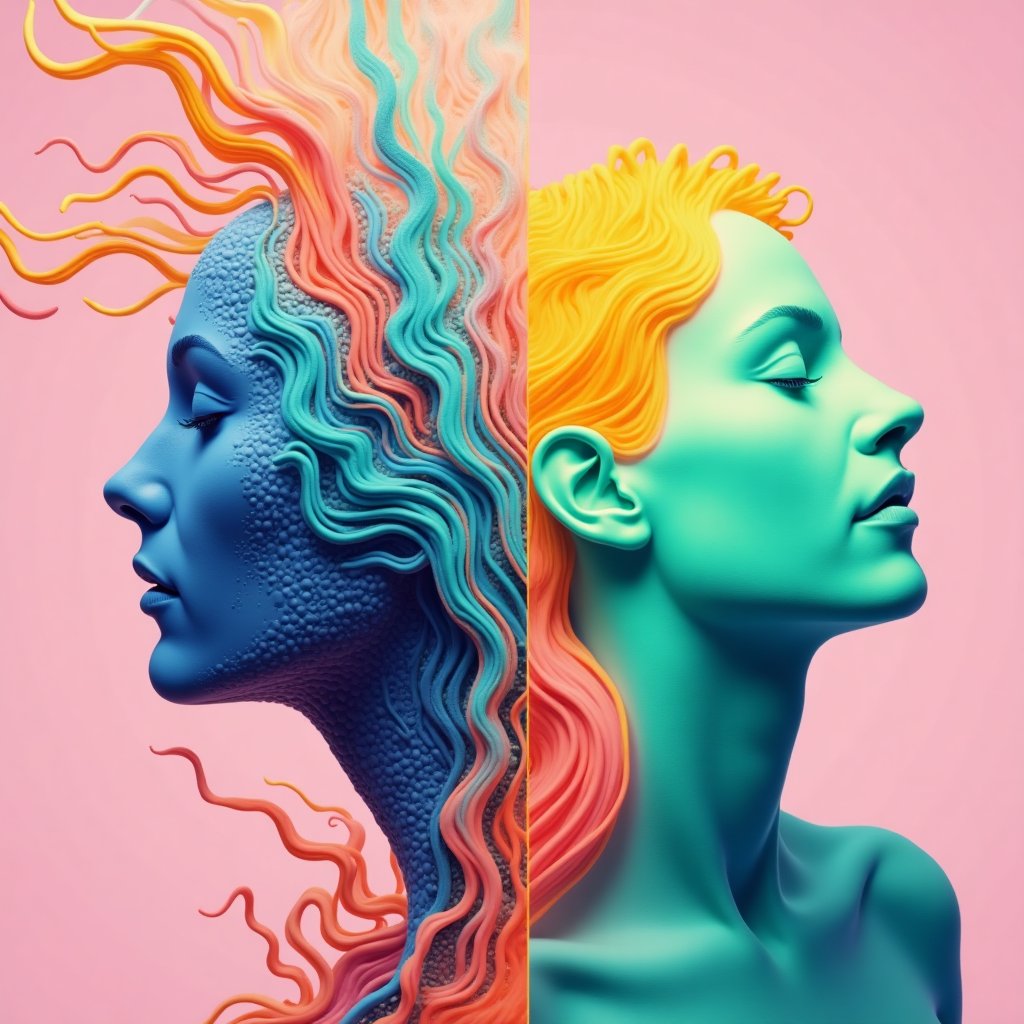
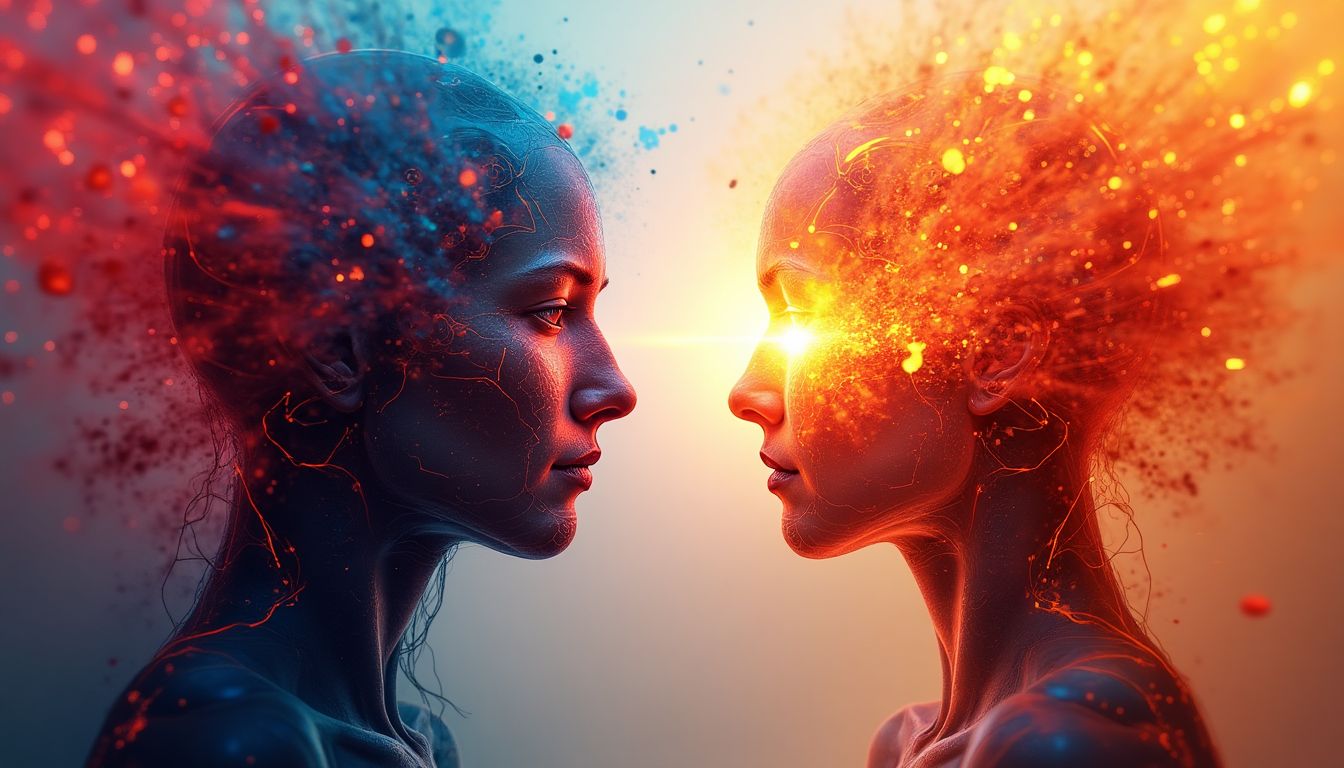
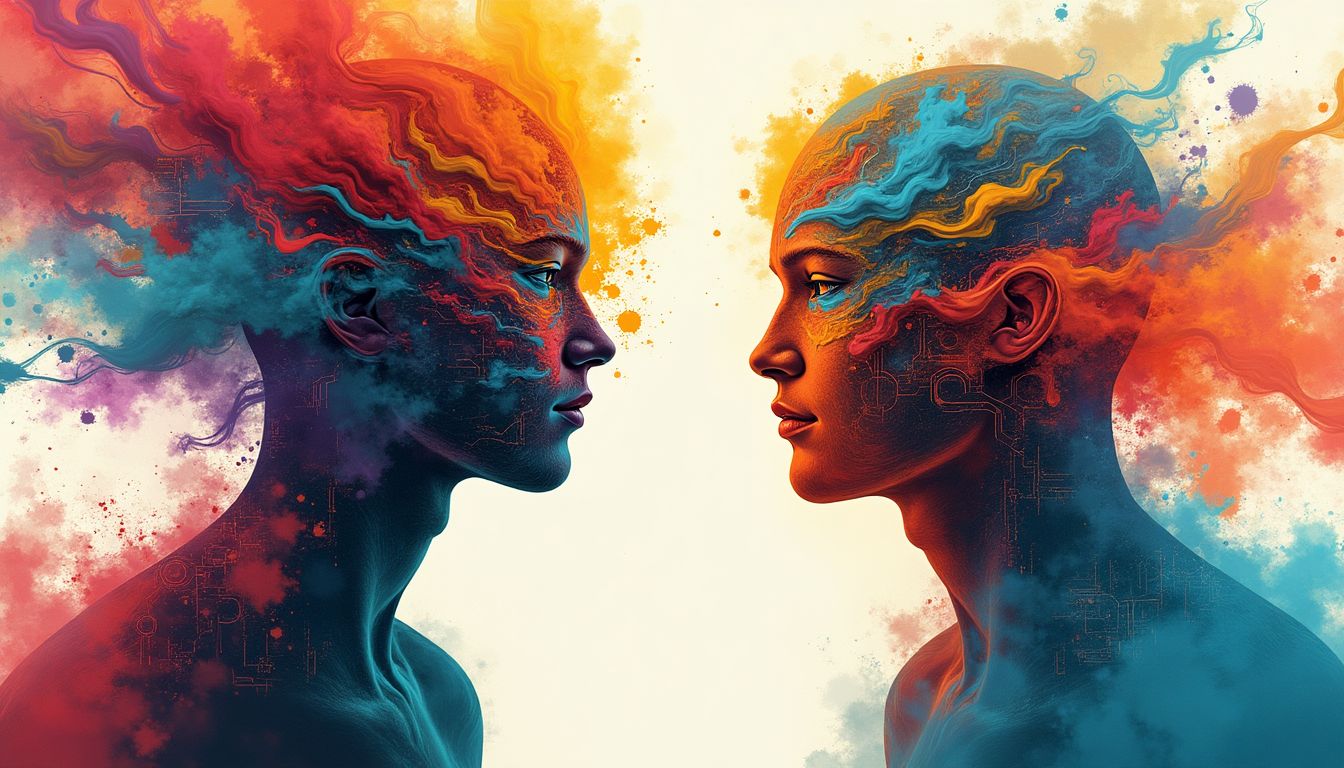
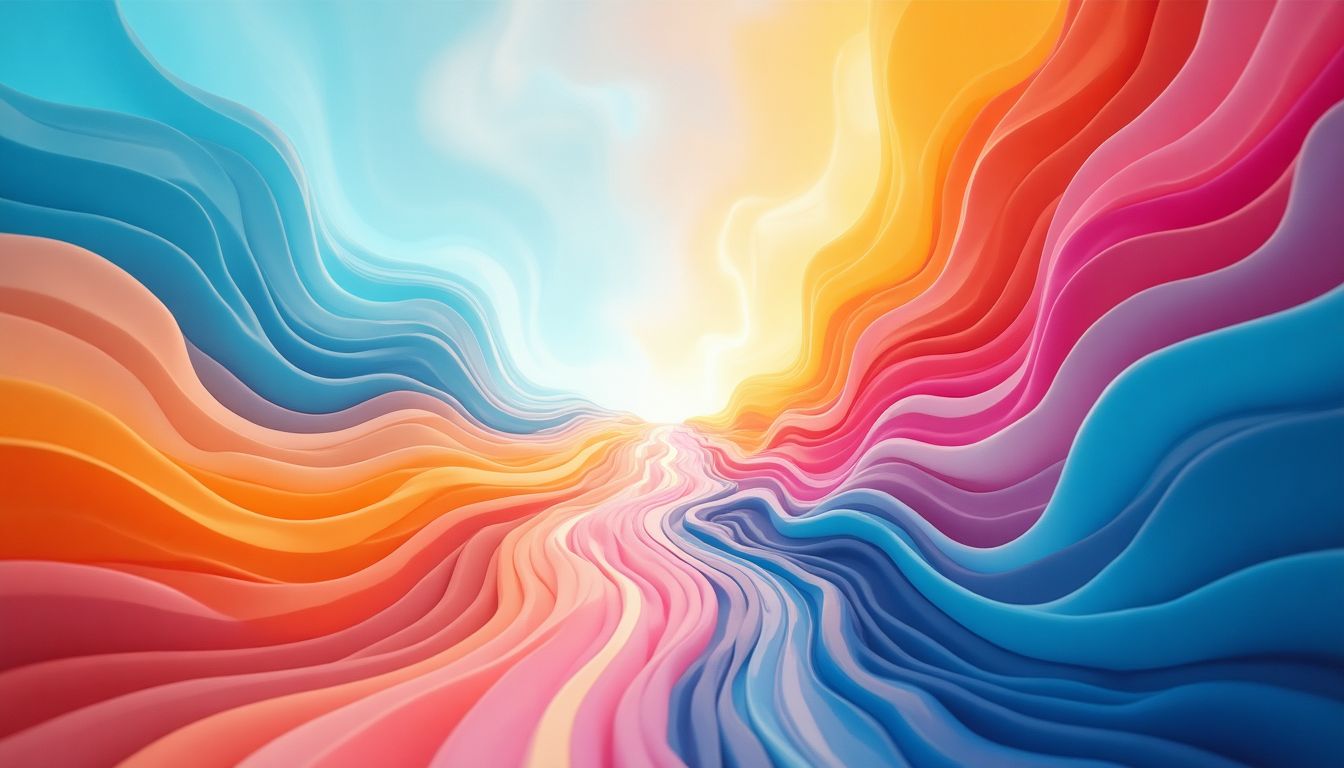
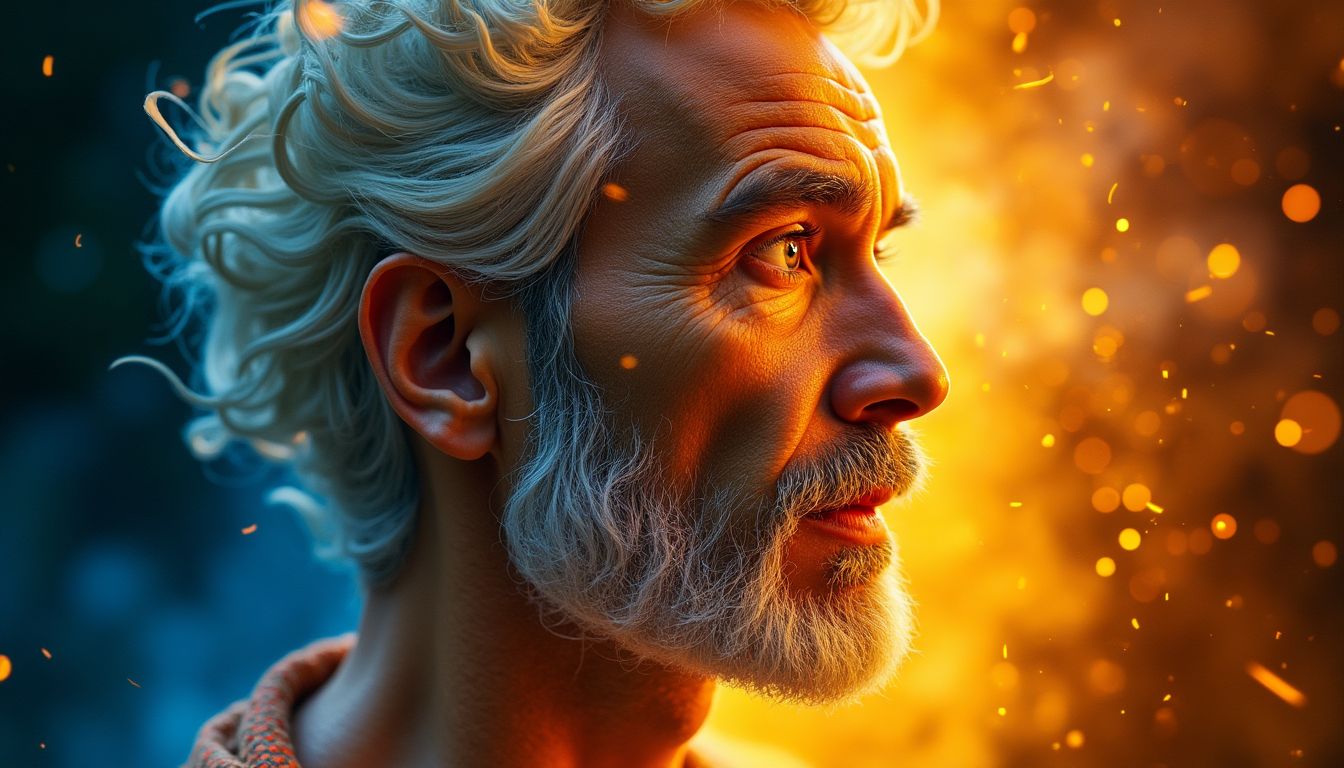
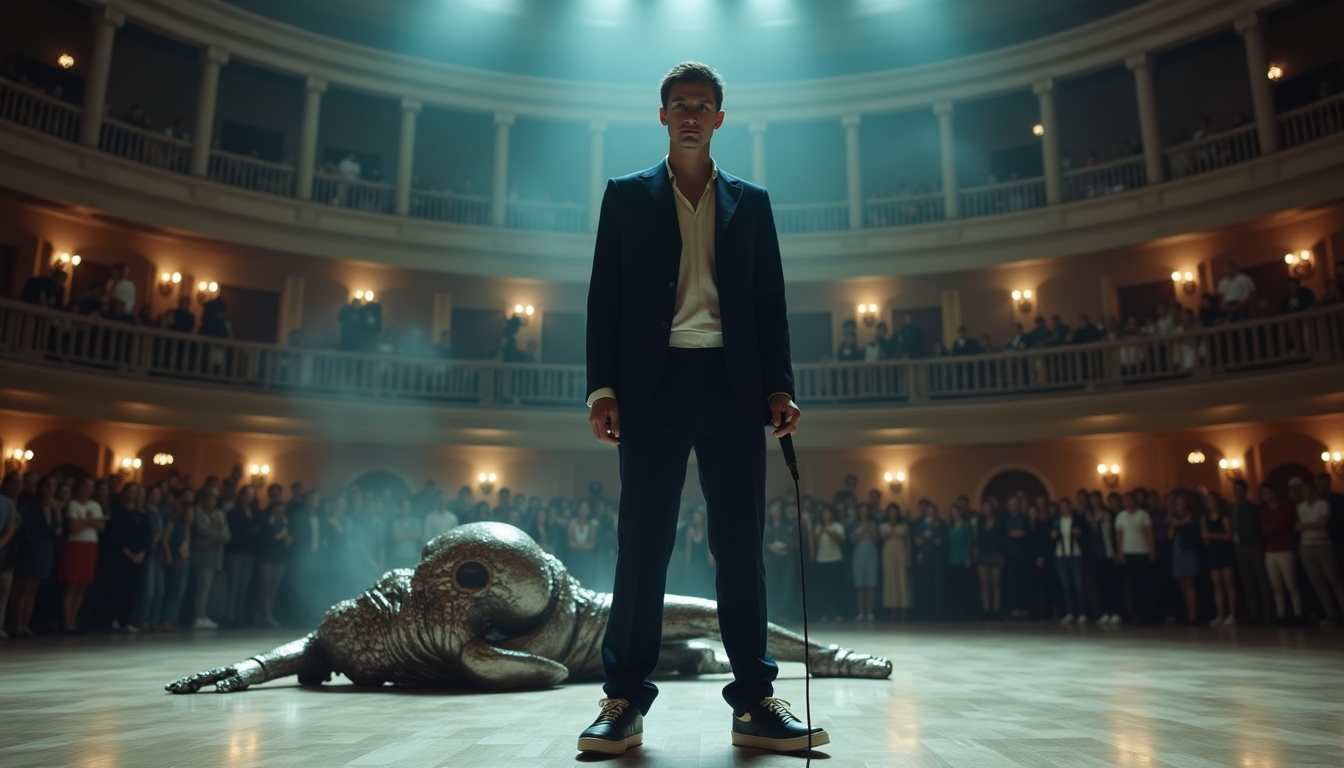























1 comment